Physical Address
304 North Cardinal St.
Dorchester Center, MA 02124
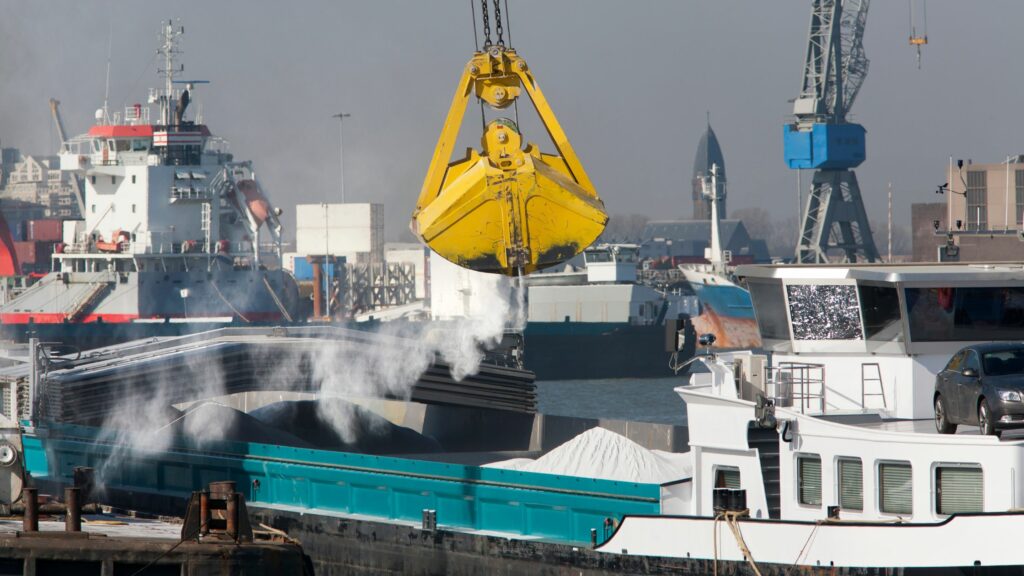
Bulk cargo plays a significant role in the shipping industry, offering efficiency and economic benefits. Its value proposition lies in transporting goods in large, unpackaged quantities, saving costs and simplifying loading and unloading processes, essential for global trade.
Bulk cargo’s versatility is remarkable, transporting anything from oil and chemicals in liquid form to coal, grain, and rock in dry form. Each type serves a unique purpose, meeting the diverse needs of the shipping and commodity industries. Liquid bulk ensures the swift transportation of crucial resources globally, while dry bulk provides businesses with essential raw materials.
From specialized vessels designed for different types of bulk materials to strategic considerations of trade routes, bulk cargo encompasses various complexities. Subsequent discussions will explore these intricacies, examining the pivotal role of bulk cargo, technological advancements improving its efficiency, and environmental factors shaping its future. These aspects will highlight bulk cargo’s critical contribution to the interconnected world of trade.
Bulk cargo refers to the transportation of goods in large quantities without individual packaging, typically utilizing massive ships specifically designed for this purpose. This method is distinguished by its efficiency and cost-effectiveness, primarily because it allows for the movement of commodities in volume, reducing the need for extensive handling. Bulk cargo can be categorized into two main types: liquid and dry.
Liquid bulk cargo includes essential fluids such as oil and chemicals, vital for various industries and energy production worldwide. On the other hand, dry bulk cargo encompasses solid materials like coal, grain, and ore, which are foundational to the construction, agriculture, and manufacturing sectors. The handling and transportation of bulk cargo require specialized vessels and equipment, designed to accommodate the unique characteristics and requirements of these large-scale shipments.
This streamlined approach not only optimizes operational efficiency but also plays a crucial role in supporting global trade, ensuring a steady supply of fundamental commodities across the globe.
To provide a clearer picture of the scale and importance of bulk cargo in global trade, the following table outlines the annual global shipping volumes for key liquid and dry bulk commodities:
| Commodity | Type | Annual Global Shipping Volume |
|---|---|---|
| Oil | Liquid Bulk | Over 3 billion metric tons |
| Chemicals | Liquid Bulk | Approximately 500 million metric tons |
| Coal | Dry Bulk | About 1.2 billion metric tons |
| Grain | Dry Bulk | Around 450 million metric tons |
| Iron Ore | Dry Bulk | Nearly 1.5 billion metric tons |
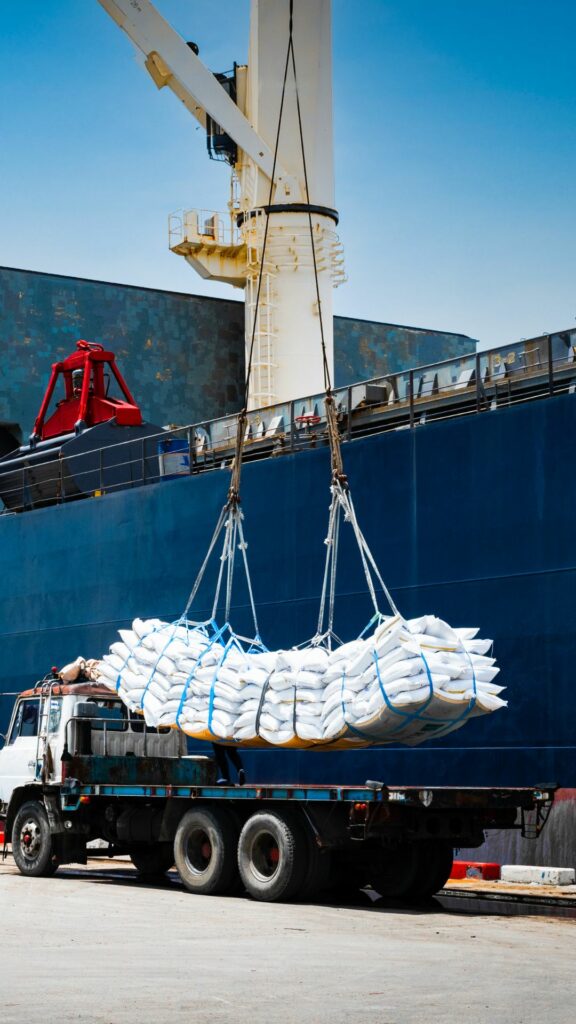
Break bulk cargo involves the transportation of goods that are handled individually, often because they are too large or too awkwardly shaped to fit into containers or bulk bins. Unlike bulk cargo, break bulk items are loaded, shipped, and unloaded piece by piece, which necessitates more labor and specialized equipment. This method is particularly suited for goods like machinery, manufacturing parts, and construction materials that cannot be easily consolidated into larger shipments.
The handling of break bulk cargo is characterized by its flexibility, allowing for a diverse range of goods to be transported together without the constraints of standard container sizes. This flexibility comes at the cost of increased handling times and higher risks of damage or loss during transport. Despite these challenges, break bulk shipping remains a vital component of global trade, especially for industries requiring the movement of oversized or heavy items that are integral to infrastructure projects and industrial setups.
To illustrate the diversity and challenges of break bulk shipping, here are examples of specific goods often transported as break bulk or project cargo.
Bulk cargo is transported in large quantities primarily due to economies of scale, which significantly reduce transportation costs. By moving goods in massive volumes, shipping companies can achieve a lower cost per unit, making it an economically efficient option for the transport of commodities. This large-scale operation also enhances efficiency in loading and unloading processes, as specialized equipment and vessels designed for bulk cargo can handle these materials more quickly and effectively than traditional methods.
Transporting goods in bulk is aligned with the needs of industries reliant on large quantities of raw materials, such as construction, agriculture, and manufacturing. The ability to move vast amounts of materials at once ensures a steady supply chain, supporting continuous production processes and meeting global demands. This efficiency and cost-effectiveness are why bulk cargo remains a cornerstone of international trade, facilitating the smooth flow of commodities across the world.
Economies of scale reduce transportation costs by allowing bulk cargo to be shipped in large quantities, thereby lowering the cost per unit. For example, transporting goods in bulk can reduce the cost per ton from $20 for smaller shipments to as low as $5 per ton for large-scale shipments, depending on the commodity and distance. This efficiency boosts shipping companies’ profitability and benefits the wider economy.
Industries relying on these commodities can access them at lower prices, and ultimately, this cost-saving can be passed on to consumers.
Efficiency in loading and unloading saves time by streamlining bulk cargo operations. Innovations such as automated conveyor systems for dry bulk and pneumatic unloading systems for liquid bulk have significantly improved operational efficiency. Modern conveyor systems, for instance, can move thousands of tons of bulk material per hour, drastically reducing the time ships spend in port.
Such efficiency reinforces the reliability and indispensability of bulk cargo transportation in global trade.
To provide a clearer understanding of how technological advancements have impacted the efficiency of bulk cargo transport, the following table outlines key innovations and their effects on loading and unloading times:
| Technology | Application | Impact |
|---|---|---|
| Automated Conveyor Systems | Dry Bulk Loading/Unloading | Reduces loading/unloading time by up to 70%, allowing for faster turnaround of vessels. |
| Pneumatic Unloading Systems | Liquid Bulk Unloading | Increases unloading speed by up to 50%, minimizing port time and associated costs. |
| Bulk Carrier Design Innovations | General Efficiency | Modern bulk carriers are designed for rapid loading and unloading, with larger hatches and optimized cargo spaces, further reducing port stay durations. |
Bulk cargo is broadly categorized into two main types: liquid bulk and dry bulk, each serving distinct sectors within the global economy. Liquid bulk cargo encompasses essential commodities such as oil, gasoline, and various chemicals, crucial for the energy sector, manufacturing processes, and a wide range of industrial applications. These liquids are transported in large tanker vessels designed to safely carry vast quantities across the oceans.
On the other hand, dry bulk cargo includes a variety of solid materials like coal, grain, iron ore, and other minerals. These commodities are fundamental to the construction industry, power generation, food production, and the manufacturing of goods. Dry bulk is transported in specialized ships known as bulk carriers, which are equipped to handle the unique storage and handling requirements of these materials.
Liquid bulk cargo is vital to the global economy, primarily consisting of oil and chemicals. Oil fuels industries, transportation, and heats homes worldwide. Chemicals are crucial for manufacturing, agriculture, and daily life.
Specialized tanker vessels transport these liquid cargoes, requiring advanced handling and storage techniques to ensure safe and efficient transit across international waters.
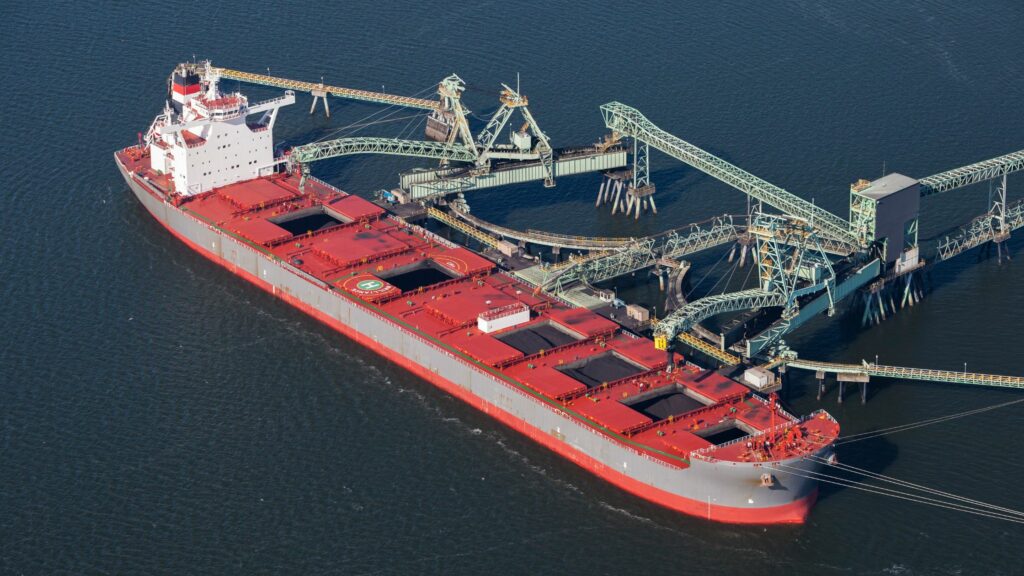
Dry bulk cargo includes a range of solid commodities essential to various sectors, such as coal, grain, and ore. Coal serves as a primary source for power generation and a critical component in steelmaking. Grain is crucial for the global food supply chain. Ore is fundamental in producing numerous products, from electronics to infrastructure. Transported in bulk carriers, these materials are vital to the construction, energy, and agriculture industries, supporting the progress and functionality of modern society.
To provide a clearer understanding of the scale and importance of these commodities in the global trade, the following table outlines the annual global shipping volumes for key liquid and dry bulk commodities:
| Commodity Type | Commodity | Annual Global Shipping Volume (approx.) |
|---|---|---|
| Liquid Bulk | Oil | 2 billion metric tons |
| Liquid Bulk | Chemicals | 350 million metric tons |
| Dry Bulk | Coal | 1.1 billion metric tons |
| Dry Bulk | Grain | 450 million metric tons |
| Dry Bulk | Iron Ore | 1.5 billion metric tons |
Break bulk cargo is handled individually because its varied sizes and shapes do not conform to standard container dimensions or bulk cargo systems. This diversity necessitates specialized handling to ensure safe loading, securing, and unloading, preventing damage during transit. Each item may require different lifting and securing methods based on its weight, shape, and size, demanding more labor and specialized equipment.
This individualized approach allows the transportation of a wide range of goods, from oversized machinery to delicate manufacturing parts, offering the flexibility needed to meet specific shipping requirements.
Break bulk cargo, due to its varied sizes and shapes, requires special handling for safe and efficient transport. Unlike containerized or bulk cargo, break bulk items can include oversized machinery or irregularly shaped industrial components, each posing unique challenges in loading and securing on vessels. This diversity demands flexibility and expertise in handling to prevent damage and ensure the cargo’s integrity throughout its journey.
A notable case study illustrating the complexities involved in break bulk shipping is the transportation of wind turbine blades. These blades, often exceeding 50 meters in length, present significant logistical challenges due to their size, shape, and susceptibility to damage. Specialized trailers and cranes are required for loading and unloading, while meticulous planning is necessary to navigate the transportation route, considering factors such as road width, bridge clearance, and turning radius.
This case underscores the intricate coordination and specialized equipment needed to successfully transport break bulk cargo.
Due to the individualized nature of break bulk cargo, more labor and equipment are essential for the loading and unloading processes. Each unique item may require specialized handling equipment, such as cranes, forklifts, or even manual labor, along with skilled personnel adept in the complex procedures of safely moving these goods. This increased demand for specialized resources inevitably leads to higher operational costs but is indispensable for transporting items that are not suitable for standard shipping methods.
The handling of break bulk cargo often involves a variety of specialized equipment, including:
Labor expertise is equally crucial, with teams of stevedores, riggers, and crane operators working together to ensure the safe and efficient handling of cargo. The expertise required spans knowledge of cargo securing techniques, understanding the balance and weight distribution of cargo, and the ability to operate complex lifting machinery. This detailed approach to handling break bulk cargo highlights the logistical demands and the necessity for specialized equipment and skilled labor to navigate the challenges of break bulk shipping effectively.
Bulk cargo transportation offers several key advantages:
These benefits make bulk cargo transportation essential for the economical and efficient movement of vital commodities around the world.
A standout benefit of bulk cargo transportation is the lower shipping costs achieved through economies of scale. By moving large amounts of goods in a single voyage, the cost per unit is drastically reduced, offering a cost-efficient solution for the global transport of essential commodities. This aspect is especially crucial for industries that depend on the bulk supply of raw materials, as it aids in keeping the products affordable and competitive in the international marketplace.
Faster loading and unloading times are another significant advantage of bulk cargo transportation, made possible by the use of specialized equipment. Bulk carriers are outfitted with advanced machinery, such as conveyor systems for dry bulk or pump systems for liquid bulk, designed to handle substantial quantities of cargo efficiently. This specialized machinery not only accelerates the loading and unloading process but also minimizes the risk of damage during these operations, enhancing the overall efficiency and reliability of the supply chain.
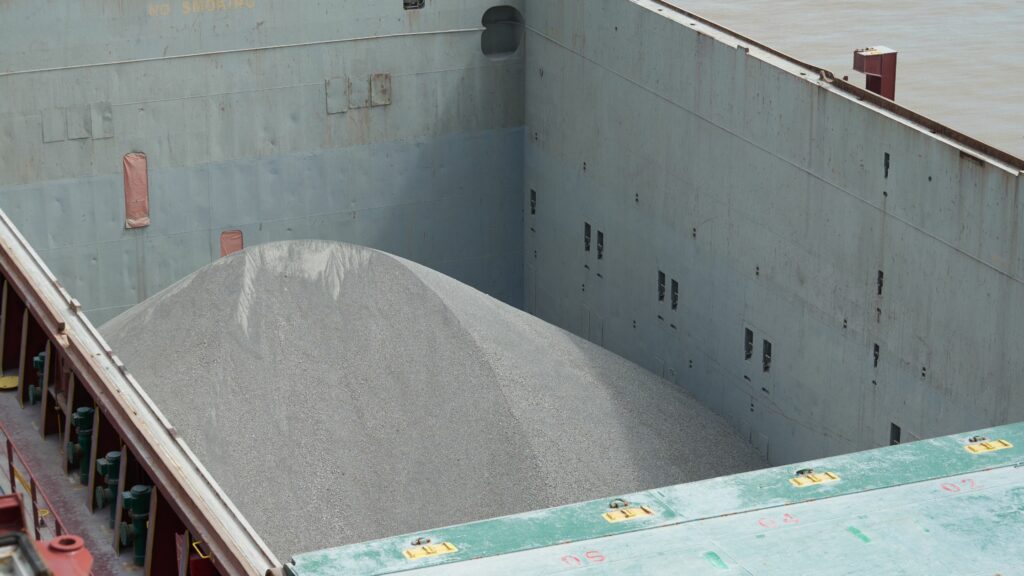
Break bulk cargo transportation offers several advantages:
The flexibility provided by break bulk cargo transportation stands out as a major advantage, enabling the shipment of a diverse array of goods in a single journey. This flexibility is invaluable for accommodating oversized, heavy, or uniquely shaped items that defy standard containerization. Moreover, it serves businesses with smaller shipment volumes well, offering an effective solution for transporting goods without necessitating full container loads.
This versatility supports a wide range of industries, including construction, manufacturing, and agriculture, by meeting their specific logistical needs with precision.
Accessibility to smaller ports emerges as another critical benefit of break bulk cargo transportation. Break bulk vessels boast the unique capability to dock at smaller ports lacking the infrastructure for large container ships or bulk carriers. This access opens up alternative shipping routes, potentially diminishing transit times and cutting transportation costs.
It expands the shipping service’s geographical reach, enabling businesses to transport goods closer to their ultimate destinations, a boon for areas with restricted access to major port facilities.
Transporting bulk cargo presents several challenges:
These challenges necessitate meticulous planning and management in the bulk shipping industry to maintain efficiency and safeguard cargo quality.
A key challenge in the realm of bulk cargo transportation is the need for specialized vessels designed to accommodate various cargo types. For example, oil tankers are equipped with complex tank cleaning systems and inert gas systems to prevent the risk of explosion, while grain carriers have advanced ventilation systems to preserve cargo quality. These specialized features ensure the safe and efficient transport of specific commodities.
The risk of contamination between different cargo loads presents another significant challenge within the bulk cargo sector. To mitigate this risk, shipping companies implement stringent cleaning protocols and utilize vessel design features that minimize contamination. For instance, chemical tankers often have segregated tanks and sophisticated piping systems to ensure that different chemicals can be transported simultaneously without cross-contamination.
Transporting break bulk cargo poses unique challenges, primarily due to the individual handling of diverse items. The varied nature of break bulk goods means that each piece may require specific handling procedures, adding complexity to loading and unloading operations. This individual attention significantly increases the labor and equipment needs, driving up the costs associated with break bulk transportation.
Additionally, the risk of damage or loss during handling is heightened for break bulk cargo, as goods are often exposed and require careful securing to prevent shifting during transit. These challenges necessitate a skilled workforce and meticulous planning to ensure the safe and efficient transport of break bulk goods, balancing the need for flexibility with the demands of operational efficiency.
A prominent challenge in the realm of break bulk cargo transportation is the higher handling costs that arise from its labor-intensive requirements. Each unique item necessitates personalized attention throughout the loading, securing, and unloading processes. This level of individual care demands a workforce with specialized skills and the use of specific equipment, significantly increasing operational expenses.
The detailed and manual handling required for break bulk cargo sharply contrasts with the automated processes prevalent in bulk and container shipping, underscoring the economic impact of choosing this method of transport.
Transporting break bulk cargo also entails an increased risk of damage or loss during the handling phases. The process of individually loading and unloading goods, whether manually or with machinery, exposes these items to potential hazards. This risk is especially acute for items that are fragile, of high value, or oversized, requiring meticulous maneuvering and handling.
To safeguard against these risks, specialized equipment and a high level of expertise are essential, yet they contribute to higher protective measures and costs, complicating the logistics and financial aspects of break bulk shipping.
Technology has significantly transformed bulk cargo transport, making it more efficient and safe. The introduction of automated handling systems has streamlined the loading and unloading processes, reducing human error and accelerating the movement of goods. This automation not only speeds up operations but also lowers the risk of workplace accidents.
Advanced tracking systems have enhanced the visibility and tracking of shipments, ensuring that cargo can be monitored in real-time throughout its journey. This level of transparency improves operational planning, reduces the risk of loss, and increases customer satisfaction by providing accurate delivery estimates. Together, these technological advancements have revolutionized the bulk cargo industry, optimizing efficiency while bolstering safety and reliability.
Automated handling systems have revolutionized the efficiency of bulk cargo transport. By automating the loading and unloading processes, these systems drastically reduce the reliance on manual labor, significantly speeding up the movement of goods. This heightened efficiency not only shortens the shipping cycle but also lowers operational costs, making the transportation of bulk commodities both more economical and environmentally sustainable.
Advanced tracking systems are pivotal in bolstering the safety of bulk cargo throughout its journey. Equipped with real-time monitoring capabilities, these systems offer unparalleled insight into the whereabouts and status of shipments. This immediate access to information facilitates swift action in the event of any discrepancies, greatly mitigating the risks of loss or damage.
The precision of advanced tracking aids in the strategic planning and execution of shipping routes, guaranteeing secure and timely delivery of cargo.
To provide a clearer understanding of the specific technologies and their impacts, the following table outlines key technological advancements in bulk cargo transport:
| Technology Type | Specific Technology | Application | Impact |
|---|---|---|---|
| Automated Handling Systems | Conveyor Belts (Dry Bulk) | Loading/Unloading Dry Bulk | Increased loading/unloading speed, reduced labor costs |
| Automated Handling Systems | Automated Pumping Systems (Liquid Bulk) | Loading/Unloading Liquid Bulk | Enhanced efficiency, minimized spillage risk |
| Tracking Systems | GPS Tracking | Real-time Cargo Monitoring | Improved route planning, reduced risk of loss |
| Tracking Systems | RFID Tags | Cargo Identification & Tracking | Enhanced inventory management, increased accuracy in cargo handling |
Technology has significantly reshaped break bulk cargo transport. Advanced logistics software allows precise scheduling and route optimization, reducing transportation time and increasing efficiency. This software is vital for coordinating the complex logistics of break bulk cargo, where each item’s unique handling needs must be managed carefully.
Additionally, advancements in cargo handling equipment, such as modern cranes and lifting gear, have minimized the risk of damage. These tools enable safer and more efficient loading and unloading operations. These improvements have streamlined the break bulk shipping process, enhancing safety and reliability, and making it a more competitive option in global transport.
Enhanced logistics planning, powered by cutting-edge technology, has markedly reduced transportation time for break bulk cargo. Advanced software enables meticulous scheduling and optimization of routes, facilitating faster movement through the supply chain. This precision is essential for managing the intricate logistics of break bulk shipments, where tailored handling and scheduling are paramount.
By refining these processes, technology ensures break bulk transportation meets the increasing demand for quicker delivery times, significantly benefiting shippers and receivers alike.
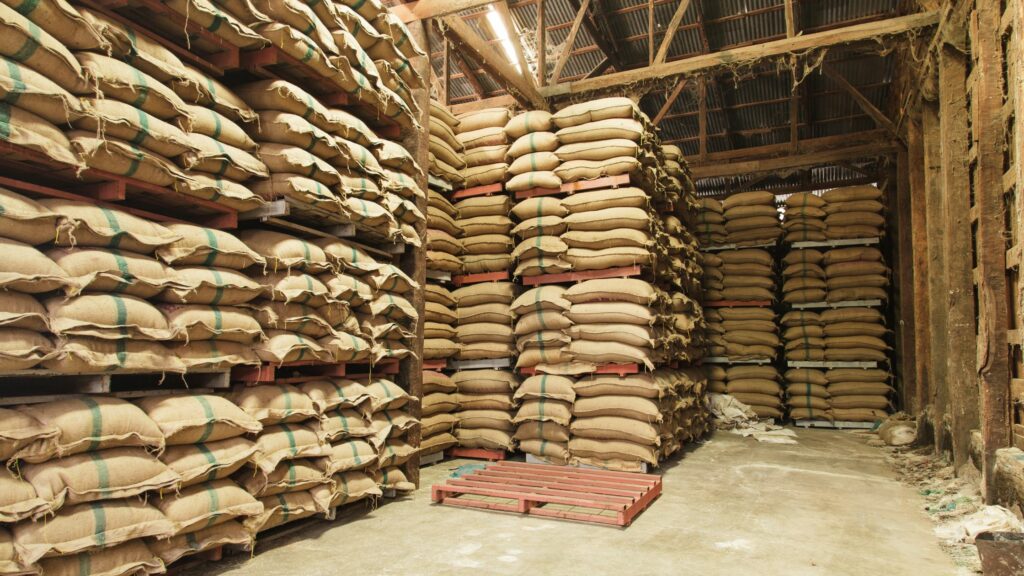
Improved cargo handling equipment has been instrumental in minimizing damage to break bulk cargo during its handling. Innovations in technology have brought about sophisticated cranes and lifting gear, designed with the capacity to manage the unique requirements of break bulk goods. These advancements offer enhanced precision and control, dramatically lowering the risk of damage.
The introduction of such equipment has not only safeguarded the integrity of break bulk cargo but also bolstered the overall reliability and efficiency of break bulk shipping as a preferred logistics option.
Environmental considerations play a crucial role in shaping cargo transport practices, with regulations on emissions from cargo vessels being a primary concern. These regulations aim to reduce the environmental impact of shipping by limiting the release of greenhouse gases and pollutants, prompting the industry to adopt cleaner, more sustainable practices. Additionally, the impact of cargo spillage on marine ecosystems is a significant environmental consideration.
Spillage can cause severe damage to marine life and habitats, leading to increased scrutiny and the implementation of stringent safety and environmental protection measures. As a result, the cargo transport industry is increasingly focused on minimizing its environmental footprint through the adoption of eco-friendly technologies and practices, such as using low-sulfur fuel, improving energy efficiency, and investing in cleaner alternative propulsion systems.
Regulations on emissions from cargo vessels are a pivotal environmental consideration within the shipping industry. These regulations are designed to mitigate the environmental impact of maritime transport by setting strict limits on the emissions of greenhouse gases and other pollutants. Spearheaded by the International Maritime Organization (IMO), these global standards encourage the shift towards cleaner fuels and the adoption of more efficient engine technologies.
Adhering to these regulations not only aids in protecting the environment but also fosters innovation in sustainable shipping practices.
The impact of cargo spillage on marine ecosystems constitutes a profound environmental challenge. Accidents that result in the spillage of hazardous materials, notably oil, can inflict catastrophic damage on marine life and the overall health of oceanic environments. Such incidents have led to stringent regulations and the implementation of comprehensive preventive measures aimed at minimizing the risk of spillage.
The shipping industry’s increasing engagement with best practices and advanced technologies for spill prevention and management underscores a deepening commitment to environmental preservation and the protection of marine ecosystems.
To provide a clearer understanding of the specific regulations and notable incidents, the following table outlines key environmental regulations affecting cargo transport and examples of significant spillage incidents:
| Regulation/Incident | Description | Year | Impact/Outcome |
|---|---|---|---|
| IMO 2020 Sulfur Cap | Limits sulfur in fuel oil used on board ships to 0.50% m/m | 2020 | Significant reduction in sulfur oxide emissions from ships |
| MARPOL Annex VI | Prevents air pollution from ships through limits on sulfur oxides and nitrogen oxides emissions | Enforced 2005 | Ongoing efforts to minimize air pollution from maritime transport |
| Exxon Valdez Spill | Oil tanker Exxon Valdez spilled 11 million gallons of crude oil in Alaska | 1989 | Devastating environmental damage, leading to reforms in shipping practices |
| Deepwater Horizon Spill | Explosion on the Deepwater Horizon oil rig resulted in a massive oil spill in the Gulf of Mexico | 2010 | One of the worst environmental disasters in history, prompting stricter offshore drilling regulations |
Global trade patterns have a profound influence on cargo transport, shaping the demand for shipping services and determining the flow of goods worldwide. Demand for commodities plays a significant role, with fluctuations in the global market directly impacting the volume of bulk cargo transported. For instance, an increase in energy consumption can lead to higher volumes of oil and coal being shipped.
Similarly, shifts in manufacturing locations and consumer markets influence the demand for break bulk and containerized cargo, as goods need to be moved from production sites to markets around the world. Additionally, trade agreements and geopolitical events can redirect shipping routes and affect the efficiency of cargo transport. As a result, the shipping industry must remain agile, continuously adapting to changes in global trade dynamics to meet the evolving needs of commerce and ensure the efficient distribution of goods.
The demand for commodities significantly impacts the volumes of bulk cargo transported across the globe. As the global economy expands and the need for resources such as oil, coal, and grains increases, the shipping industry sees a corresponding rise in the movement of these materials. This demand drives the bulk cargo sector, dictating the frequency and size of shipments.
Seasonal variations and economic trends further influence these volumes, requiring the shipping industry to adapt to fluctuating demands to ensure the steady supply of essential commodities.
Manufacturing shifts play a crucial role in influencing the flows of break bulk cargo. As production centers relocate in response to labor costs, trade policies, and market access, the routes and volumes of break bulk shipments adjust accordingly. This relocation often leads to increased transportation of machinery, equipment, and raw materials to new manufacturing hubs.
Consequently, the break bulk shipping sector must remain flexible, adapting its operations to accommodate changes in global manufacturing landscapes and maintaining the efficiency of the logistics chain.
The future of cargo transport is poised for significant transformation, driven by advancements in technology and shifts in global trade practices. One of the most anticipated trends is the increase in the use of LNG-powered vessels, which represents a move towards more environmentally friendly shipping solutions. These vessels emit significantly lower levels of greenhouse gases compared to traditional fuel options, aligning with the global push for sustainability.
Additionally, the growth in automation and digitalization of logistics is expected to streamline operations, enhance efficiency, and improve tracking and transparency across the supply chain. Automation in loading and unloading processes, along with digital platforms for managing cargo flows, will reduce human error and optimize scheduling. Furthermore, the integration of advanced analytics and AI will enable more accurate forecasting and risk management, shaping a more resilient and responsive cargo transport sector.
Together, these trends indicate a future where cargo transport is not only more sustainable but also more efficient and reliable.
A significant future trend in cargo transport is the increase in the use of LNG-powered vessels. As the maritime industry shifts towards more sustainable and environmentally friendly practices, LNG (Liquefied Natural Gas) stands out as a cleaner alternative to conventional marine fuels. These vessels offer a substantial reduction in emissions of sulfur oxides, nitrogen oxides, and carbon dioxide, meeting the demands of stricter global emissions standards.
The move towards LNG-powered shipping is a pivotal step in diminishing the environmental footprint of global maritime transport, heralding a new era of greener shipping methodologies.
The growth in automation and digitalization of logistics marks another pivotal trend poised to redefine the future of cargo transport. Technological innovations are leading to more streamlined operations, including automated loading and unloading processes and advanced cargo tracking systems. Digital platforms are enhancing the efficiency of cargo flow management, bolstering transparency, and minimizing the potential for human error.
This digital shift is revolutionizing cargo monitoring and management across the supply chain, ushering in a more efficient, integrated, and responsive logistics network.